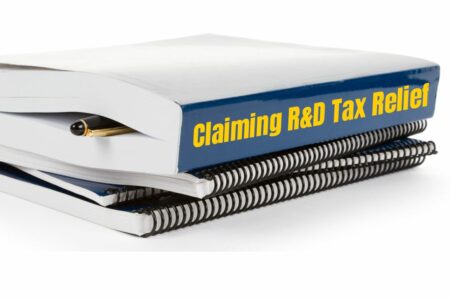If that is the case, the R&D tax relief scheme can free up funds to inject back into your business. There are many potential benefits to engaging with the scheme as a pioneering SME, so read on to get a grip on the basics of R&D tax relief and how to get started.
What is R&D Tax Relief
The Research and Development (R&D) Tax Relief scheme promotes technological innovation and growth across various industries within the UK. The scheme provides tax breaks for businesses engaged in qualifying R&D activities. Businesses can use the relief that the scheme provides to free up funds to reinvest in further innovation or business activities.
Claiming R&D tax relief can also offset some the financial risk associated with innovating or experimenting, making it more feasible to undertake those big, ambitious technology projects that might otherwise be too risky to undertake.
R&D tax relief eligibility criteria
To qualify for R&D Tax Relief, your business and its activities must meet certain criteria:
- Basic Criteria: Your business needs to be a registered company that is subject to corporation tax. You should be engaged in technological innovation, rather than work to improve commercial outcomes or business processes.
- R&D Activities: Your R&D activities must aim to achieve a scientific or technological advance relative to the technology that existed in your industry at the start of the project. The work must involve overcoming significant technical or scientific barriers. These activities should go beyond well-established practices in your industry.
- Uncertainty: The R&D projects you undertake should involve a degree of technical uncertainty. This means attempting to achieve something that can’t be readily accomplished through current knowledge or methods.
- Competent Professionals: Your R&D work should be led by people with the skills and experience to say, with authority, what constitutes an advance in your industry. Ideally, they should also have qualifications in the area of the advance, although this isn’t always possible in some areas of technology. Without Competent Professionals involved, it can be easy for HMRC to challenge the claim.
These criteria are all listed on the HMRC website. At the moment there are two different schemes; one for small businesses, and one for large companies. You should check the criteria carefully to make sure you apply for the right kind of relief.
The R&D tax relief claims process
It is definitely possible to file an R&D tax relief claim on your own, but the complexity of the scheme and HMRC’s current twitchiness makes that a risky approach. With the amount of work involved in preparing a claim and the potential negative consequences of getting it wrong, it’s a good idea to engage a reputable R&D advisor or accountant who is well versed in R&D tax relief.
The next step is to identify activities undertaken by your business that would be eligible for R&D tax relief . You’ll need to explain the technical advances, uncertainties, and work undertaken throughout the course of the project.
Once you’ve identified the R&D activity, you’ll need to prepare a detailed breakdown of costs associated with the project. However, only some costs are eligible for relief. These include:
- Consumable items
- Clinical trial volunteers
- Data licences and cloud computing (for accounting periods starting on or after 1 April 2023)
- Externally provided workers
- Staff costs
- Software
- Subcontractor costs
Once you’ve gathered all the information and presented it clearly for HMRC, you, or more likely your advisor or accountant, would submit the claim. There are two parts to this. First, one of you will need to submit the Additional Information Form that describes the details of your project and costs. Then your accountant (re)submits your CT600 (your corporation tax return) with the R&D figures included.
HMRC aim to process claims within 40 days. If all goes well, that will be the end of it. However, if there’s an enquiry, this will require more work from you and your advisor and could result in your claim being rejected. We’ll share more about this in another article soon.
How to get started with R&D tax relief
Finding a responsible advisor is the most important first step to getting started with an R&D claim. Our members directory is the perfect place to look! Our members typically join The R&D Community because they want to improve their knowledge and skills in R&D tax relief, so you can rest assured that the directory is stocked with responsible and reliable providers.
Our advice is to check out how much training they’ve done and to have a chat with a few of them to decide who you feel comfortable with. With their support, submitting claims through the R&D tax relief scheme could prove to be a major boost for your business.





